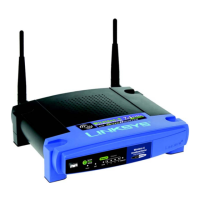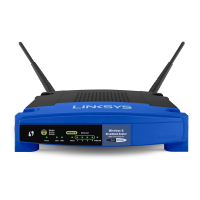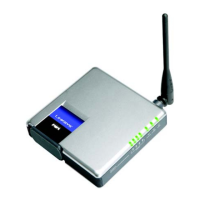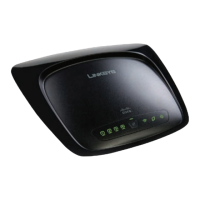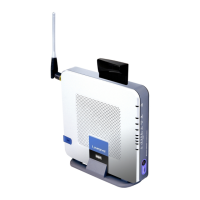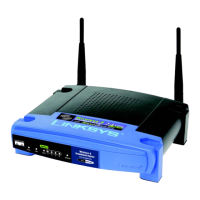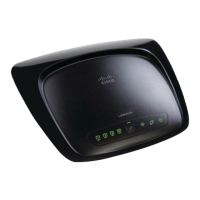





Do you have a question about the Linksys WRT54G and is the answer not in the manual?
| Brand | Linksys |
|---|---|
| Model | WRT54G |
| Category | Wireless Router |
| Language | English |
Introduces the Wireless-G Broadband Router and its capabilities.
Outlines the structure and content of the user guide.
Explains different network layouts and their implications.
Compares Ad-Hoc and Infrastructure modes for wireless network setup.
Details the ports and buttons located on the back of the router.
Describes the LEDs and the SecureEasySetup button on the router's front panel.
Introduces the chapter and outlines connection scenarios.
Provides step-by-step instructions for physical connection to a modem.
Guides users on connecting the router behind another existing router.
Introduces the setup wizard and its functions.
Details the steps involved in using the software setup wizard.
Explains how to use SecureEasySetup for wireless network configuration.
Introduces the web-based utility for router configuration.
Details the settings for basic internet connection configuration.
Explains how to configure Dynamic Domain Name System for the router.
Describes how to clone the MAC address for ISP compatibility.
Covers advanced routing configurations like Dynamic and Static routing.
Details basic settings for the wireless network, like SSID and channel.
Explains various wireless security options like WPA and WEP.
Describes how to filter wireless access based on MAC addresses.
Covers advanced wireless settings for optimizing performance and security.
Details firewall protection features like SPI and port blocking.
Explains how to allow VPN tunnels through the router's firewall.
Allows blocking or allowing specific internet usage and traffic.
Configures port forwarding for applications like web servers or online games.
Manages outgoing data for specific port numbers for application access.
Exposes a single PC to the internet for special services like gaming.
Prioritizes network traffic for demanding applications like videoconferencing.
Manages router functions, access, and security settings.
Configures logging of internet traffic and network activity.
Provides tools for checking network component connections.
Resets router configuration settings to their original factory defaults.
Guides on updating the router's firmware for new features or fixes.
Allows backing up or restoring the router's configuration file.
Displays the router's current status, firmware version, and connection details.
Shows the status of the local network, including MAC address and IP information.
Displays the status of the wireless network, including mode, SSID, and encryption.
Offers solutions for common issues encountered during installation and operation.
Addresses common user queries regarding setup, connectivity, and features.
Provides steps for finding MAC/IP addresses in Windows 98SE/Me.
Explains how to enter MAC addresses in the router's web utility.
